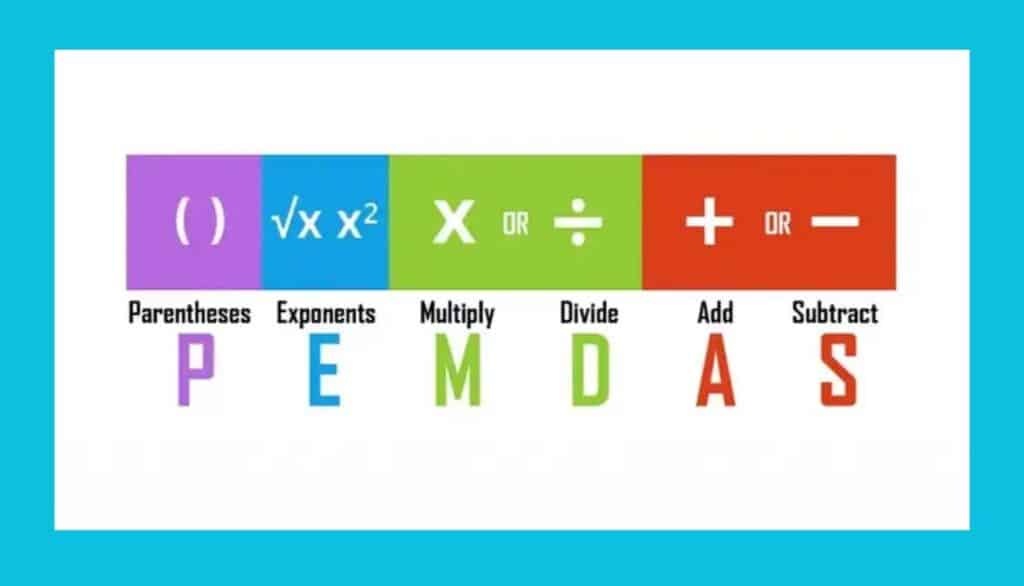
Mathematics often involves complex calculations with multiple steps, making it crucial to follow a specific order to achieve accurate results. This process is known as the “Order of Operations.”
The standard rule used to remember this sequence is the acronym PEMDAS, which stands for Parentheses, Exponents, Multiplication, Division (from left to right), and Addition and Subtraction (from left to right).
This article will delve into the significance of PEMDAS, its components, and how to apply it correctly in mathematical expressions.
Importance of the order of operations
When solving mathematical expressions, the order in which operations are performed can significantly alter the result. For instance, consider the expression 3+5×2. If one were to perform the addition first, the result would be 16, but if the multiplication is done first, as the rules of PEMDAS dictate, the result would be 13. Hence, a consistent rule like PEMDAS ensures uniformity and correctness in calculations, preventing misinterpretation and errors.
Components of PEMDAS
1. Parentheses (P):
Operations inside parentheses (or any grouping symbols like brackets or braces) are performed first. Parentheses are used to indicate that the enclosed expression should be evaluated as a unit. For example, in the expression 2×(3+4), the operation inside the parentheses, 3+4, is completed before multiplying by 2, resulting in 14.
2. Exponents (E):
Next, any exponents (or powers and roots) are calculated. Exponents indicate that a number is raised to the power of another number. For example, in 52+4, the exponentiation (which equals 25) is calculated before the addition, resulting in 29.
3. Multiplication and Division (MD):
After parentheses and exponents, multiplication and division are performed from left to right. It’s essential to note that these operations are of equal priority and are executed in the order they appear from left to right. For instance, in the expression 10÷2×3, division is performed before multiplication, resulting in 15 (not 1.667).
4. Addition and Subtraction (AS):
Lastly, addition and subtraction are carried out from left to right. Like multiplication and division, these operations are of equal priority and should be performed in the order they occur. For example, in the expression 7−3+2, subtraction is done before addition, resulting in 6.
Applying PEMDAS: A step-by-step example
To illustrate how PEMDAS works, let’s solve the following expression step-by-step:
8+3×(23−5)+6÷3
Parentheses:
First, solve the expression within the parentheses:
23−5
=8−5
=3
So, the expression becomes:
8+3×3+6÷3
Exponents:
The expression no longer contains exponents.
Multiplication and division:
Next, perform the multiplication and division from left to right:
3×3=9
6÷3=2
The expression now simplifies to:
8+9+2
Addition and subtraction:
Finally, perform the addition:
8+9=17
17+2=19
The final result is 19.
Common mistakes and tips
One common mistake is to perform operations out of order, especially with multiplication and addition. For instance, in the expression 2+3×4, a common error is to add 2+3 first, leading to 5×4=20, instead of correctly multiplying 3×4=12 first, and then adding 2+12=14.
To avoid such mistakes, always remember to follow PEMDAS strictly, especially in complex expressions. Using parentheses can help clarify the order of operations and prevent errors.
Conclusion
The Order of Operations is a fundamental mathematical concept, essential for accurately solving expressions. By following the PEMDAS rule, students and mathematicians ensure that their calculations are consistent and correct. Understanding and mastering this concept is crucial for tackling more advanced mathematical problems and ensuring clear communication in mathematical reasoning.
Worksheets with answers
- Level 1.1: Addition, subtraction, and parentheses
- Level 1.2: Addition, subtraction, and parentheses
- Level 2.1: Addition, subtraction, multiplication, division, and parentheses
- Level 2.2: Addition, subtraction, multiplication, division, and parentheses
- Level 3.1: Addition, subtraction, multiplication, division, exponents, and parentheses
- Level 3.2: Addition, subtraction, multiplication, division, exponents, and parentheses
- Level 4.1: Addition, subtraction, multiplication, division, exponents, square roots, and parentheses
Edublox offers cognitive training and live online tutoring to students with dyslexia, dysgraphia, dyscalculia, and other learning disabilities. Our students are in the United States, Canada, Australia, and elsewhere. Book a free consultation to discuss your child’s learning needs.
Authored by Shanice Jordaan. Shanice holds a bachelor’s degree in education and has extensive teaching experience, having taught math for five years and English for three. She leverages her skills as an English teacher, online ESL teacher, and math and reading tutor to design engaging lessons, foster positive learning environments, and cater to diverse learning needs. Worksheets created by Caitlin Jacobs.
